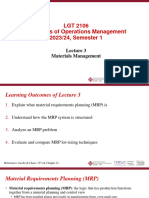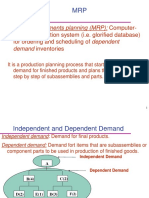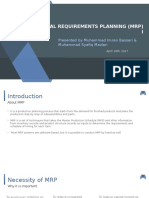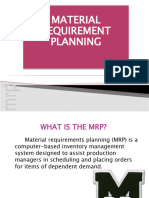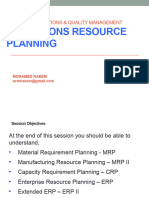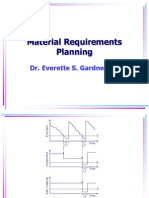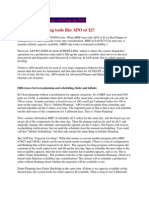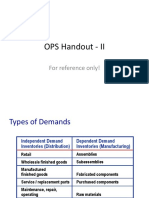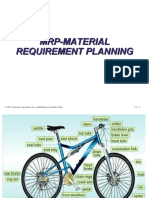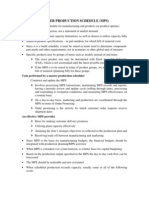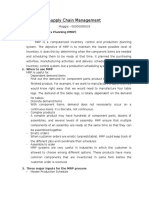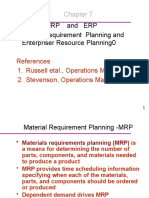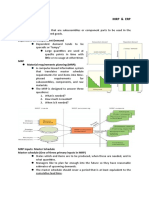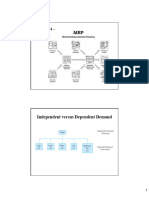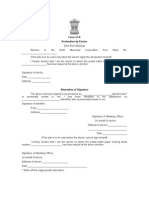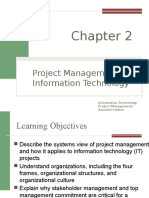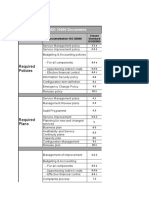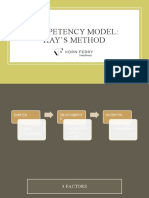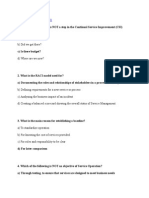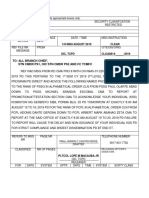0% found this document useful (0 votes)
205 views39 pagesLecture Notes of Unit - 5
The document discusses the Master Production Schedule (MPS) and Material Requirements Planning (MRP) processes. It provides examples of how an MPS is created from aggregate production forecasts and broken down into a schedule by product and time period. It then explains how MRP uses the MPS, bills of materials, and inventory data to calculate gross requirements, scheduled receipts, projected balances, net requirements, and planned order releases for components to determine the optimal production and procurement schedule to meet demand.
Uploaded by
Anshu Kumar SrivastavaCopyright
© © All Rights Reserved
We take content rights seriously. If you suspect this is your content, claim it here.
Available Formats
Download as PDF, TXT or read online on Scribd
0% found this document useful (0 votes)
205 views39 pagesLecture Notes of Unit - 5
The document discusses the Master Production Schedule (MPS) and Material Requirements Planning (MRP) processes. It provides examples of how an MPS is created from aggregate production forecasts and broken down into a schedule by product and time period. It then explains how MRP uses the MPS, bills of materials, and inventory data to calculate gross requirements, scheduled receipts, projected balances, net requirements, and planned order releases for components to determine the optimal production and procurement schedule to meet demand.
Uploaded by
Anshu Kumar SrivastavaCopyright
© © All Rights Reserved
We take content rights seriously. If you suspect this is your content, claim it here.
Available Formats
Download as PDF, TXT or read online on Scribd
/ 39






